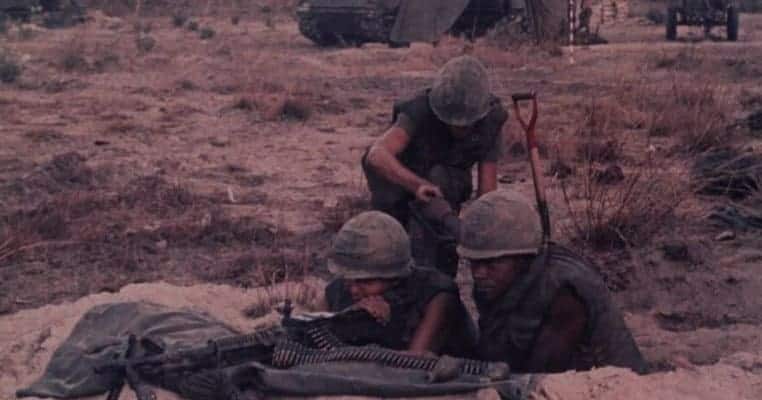The Vietnam War was not officially a war for the United States, in the sense that there was never a declaration of war requested by the president or approved by congress. But it was fought with the full strength of the American military, other than those weapons which later became categorized as Weapons of Mass Destruction. The US Army, including the National Guard, deployed forces to Vietnam. So did the US Air Force, with heavy bombers, attack aircraft, fighter-bombers, and support forces. The US Navy deployed warships, including aircraft carriers, cruisers, and even a battleship. The Marines operated at bases and in-country. The Coast Guard patrolled the rivers and waterways.

Training for deployment in Vietnam took into account a variety of factors, depending on the specialization of the unit in which one was deployed. It took place in the United States, at advanced bases overseas in the Philippines and other Pacific locales, and both in the field and in the classroom. US specialists also undertook much of the training for the South Vietnamese Army (officially the Army of the Republic of Vietnam, ARVN). Much training changed dramatically over the course of the war, including the lessons learned by all forces deployed. Here are some aspects of training for the Vietnam War.
1. It all started with the basic training known colloquially as boot camp.

Enlistees and draftees reported to their first military training station as boots, arriving at camps where they were introduced to their drill instructor (often quite rudely) who supervised their transition from civilian to soldier, sailor, airman, or marine. The transition included appearance, with a military haircut being one of the first orders of business. Uniforms were issued, as were toiletries, towels and washcloths, combs and toothbrushes. All possessions from civilian life were taken and packed away, replaced by military issues. Some religious items, such as rosaries, were allowed to remain in the enlistee’s possession.
The enlistee quickly learned that the items which he had known all of his life as one thing was given another name in whichever branch of the service he found himself. Hats were no longer hats, instead, they were covers. Sailors used a head when answering the call of nature; the army recruit needed to find a latrine. Marines received Load Bearing Equipment (called packs or bags in the civilian world). Marching occupied most of the time in boot camp. Recruits marched in formation to meals, classes, training exercises, lectures, physical fitness training, and virtually every other activity designed to indoctrinate them into the armed forces during the eight or nine-week stay in basic training.

